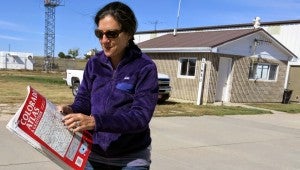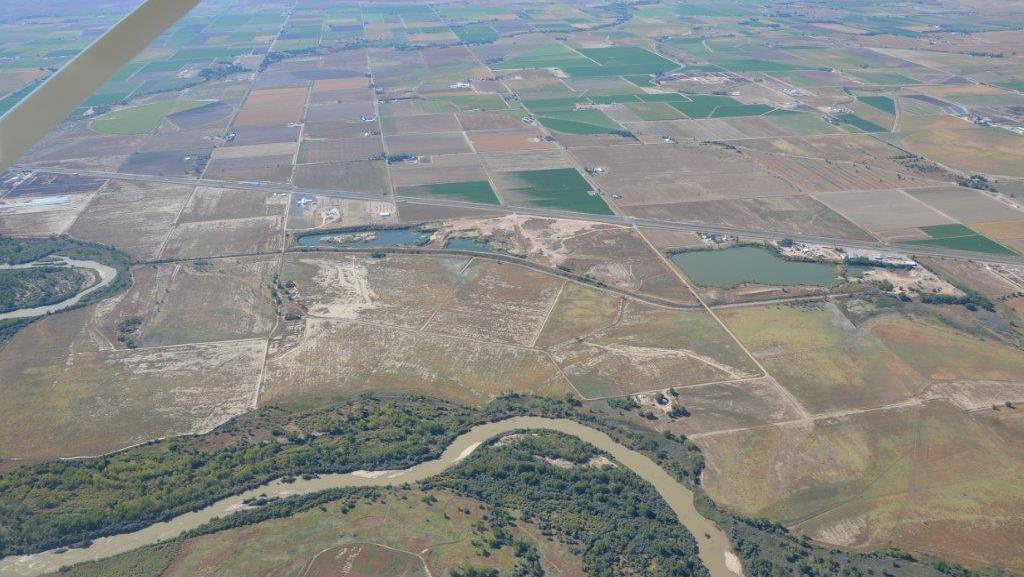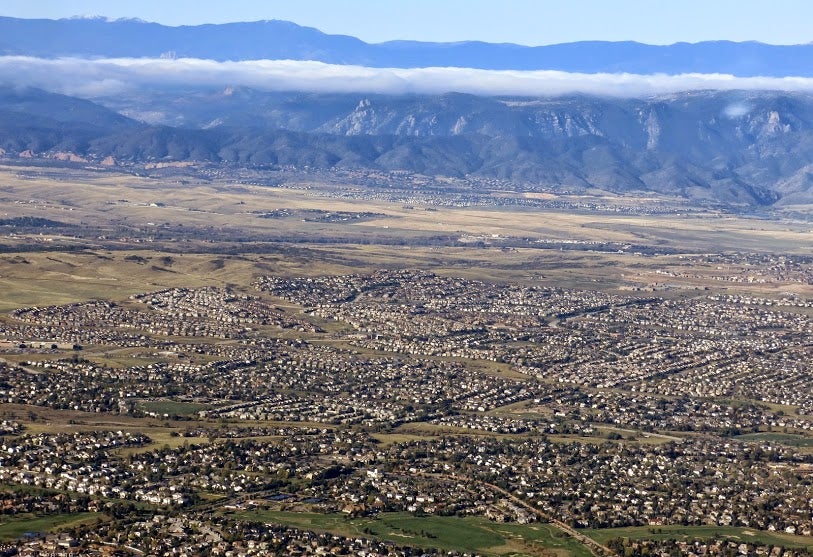
EDF’s Jennifer Pitt prepares for her flight. EDF partnered with LightHawk to increase understanding of the impacts of water imports to population centers in Colorado’s Front Range. Photo credit: David Owen with support from LightHawk.
I’ve been a student of water use, storage and transportation for decades, but never before have I seen the collection and diversion systems from the air, other than a glimpse of a big reservoir from a commercial jet. That is, not until a few weeks ago, when I had the extraordinary opportunity to fly with a LightHawk volunteer pilot to see Colorado’s waterworks from the air.
Seeing the landscape from above gave me a completely new perspective.
The point of my trip was to see the effects that Colorado’s urban growth – with its increasing urban water demands – is having on the state’s working lands and rivers. One view painted a very clear picture: a footprint of idled farmland in Rocky Ford, Colorado.
Western water supplies are already being pushed to the limit. When cities face growing demands, they can no longer simply take more water from rivers. They’ve already started to “buy and dry,” or purchase farmers’ water rights, which results in this permanently fallowed farmland.

Fallowed farmland in Rocky Ford, Colorado shows the landscape impacts of “buy and dry.” Photo credit: David Owen with support from LightHawk.
When this happens, that land loses value beyond its agricultural outputs. Neighboring farms can be impacted by changes to ditch operations, invasive weeds, and even by the loss of farm service providers as the loss of farmland adds up. Also lost are valuable ecosystem services that benefit wildlife, not to mention the cultures and traditions of those Colorado farmers and cattlemen.
As urban water demands continue to grow, buy and dry threatens to expand throughout the West, including in the Colorado River Basin, where river-based recreation contributes significantly to the economy.
Fortunately, there are alternatives to buy and dry – ones that can improve both agricultural and environmental sustainability.
If there was one key takeaway from my flight, it’s that the future of our farms and rivers are inextricably linked. The risks are impossible to ignore, and steps must be taken to ensure the long-term viability of Colorado’s environment and economy.

The views from the air illustrate the direct link between farms and rivers. Photo credit: David Owen with support from LightHawk.










